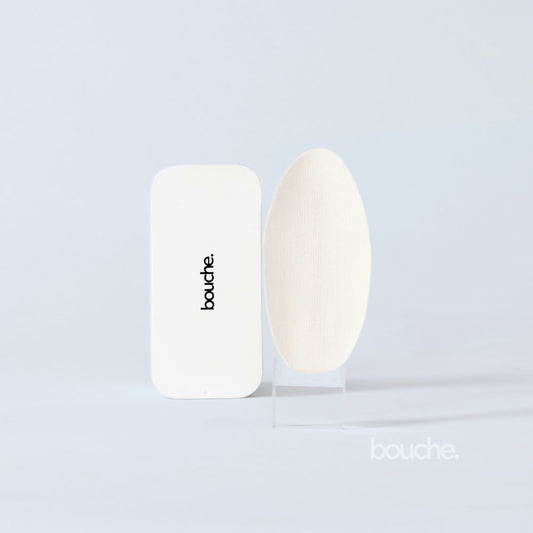Allergy season can bring a host of frustrating symptoms, with nasal congestion often leading the pack. The constant feeling of a stuffy nose can disrupt sleep, hinder daily activities, and leave you feeling drained. For those seeking a simple, drug-free solution, nasal strips have become a popular choice. But do these adhesive breathing aids really work for allergy relief? This article delves into the science behind nasal strips, their benefits for seasonal congestion relief, and whether they are the right choice for you.
What Are Nasal Strips and How Do They Work?
Nasal strips are simple, non-prescription adhesive strips that you place on the outside of your nose. They contain small, flexible, spring-like bands. The principle behind them is purely mechanical. When placed correctly across the bridge of the nose, the bands gently lift the sides of the nose, opening up the nasal passages.
This action helps to reduce nasal airflow resistance, allowing you to breathe more easily through your nose. Think of it as opening a window to let more air in. This can be particularly helpful when allergies cause inflammation and swelling in the nasal passages, leading to congestion.
Benefits of Using Nasal Strips During Allergy Season
For those suffering from allergy-induced congestion, breathing aids like nasal strips offer several key benefits:
- Improved Airflow and Easier Breathing: The most immediate benefit of nasal strips is the instant improvement in airflow. This can provide significant relief from the stuffiness and difficulty breathing associated with allergies.
- Reduced Allergy Snoring: Nasal congestion is a common culprit behind snoring. By opening the nasal passages, allergy nose strips can reduce or even eliminate snoring, leading to a more restful night's sleep for both you and your partner.
- A Drug-Free Solution: Nasal strips for allergies are a great option for those who want to avoid medication or are concerned about potential side effects or drug interactions. This makes them suitable for a wide range of people.
- Non-Habit Forming: Unlike some medicated nasal decongestant sprays that can cause rebound congestion with prolonged use, nasal strips are not habit-forming and can be used long-term throughout allergy season.
- Convenience and Ease of Use: Nasal strips are widely available over-the-counter and are simple to apply and remove.
Do Nasal Strips Help with Allergies?
While nasal strips do not cure the underlying allergy, they are an effective tool for managing one of its most common symptoms: nasal congestion. Scientific studies have shown that nasal strips can significantly reduce nasal resistance and improve nasal airflow. By providing instant relief from a stuffy nose, they can improve sleep quality and daytime alertness for allergy sufferers.
How to Use Nasal Strips Effectively for Allergies
To get the most out of your nasal strips, proper application is key:
- Clean and dry your nose: Wash your face to remove any dirt or oil, and dry the area completely.
- Position the strip: Remove the liner and place the strip across the bridge of your nose, with the tabs on the flaring part of your nostrils.
- Press and hold: Gently press down on the strip for about 30 seconds to ensure it adheres properly.
When it's time to remove the strip, do so slowly and gently, preferably while washing your face or in the shower, to minimize the risk of skin irritation.
Potential Side Effects of Nasal Strips
Nasal strips are generally safe, with the most common side effect being mild skin irritation from the adhesive. In rare cases, frequent use on sensitive skin could lead to more significant skin issues. It's important to give your skin a break if you notice any irritation. Bouche nasal strips are designed to be hypoallergenic and safe for sensitive skin.
Alternatives to Nasal Strips for Allergy Relief
While nasal strips are effective for congestion, other treatments can help with a broader range of allergy symptoms:
- Antihistamines: These medications, available as pills or liquids, work by blocking histamine, the chemical your body releases during an allergic reaction. They can help with symptoms like itching, sneezing, and a runny nose.
- Nasal Sprays: Corticosteroid nasal sprays reduce inflammation in the nasal passages, while antihistamine sprays offer targeted relief. Decongestant sprays can also help with stuffiness, but some are not recommended for long-term use.
- Saline Nasal Rinses: Rinsing your nasal passages with a saline solution can help to flush out allergens and mucus.
The Bouche Approach to Better Breathing
At Bouche, we believe in the power of simple, science-backed tools to restore the body's natural processes. While nasal strips can be a great tool for improving nasal airflow during the day or when dealing with seasonal congestion, optimizing your breathing during sleep is crucial for overall health and vitality. Our flagship product, a medical-grade mouth tape, promotes nasal breathing during sleep, which can help reduce inflammation, improve sleep quality, and enhance long-term health. For a comprehensive approach to enhanced breathing, many users pair our mouth tape and nasal strips, which are available together in our Breathe Better Kit. For individuals using CPAP machines for sleep apnea, our mouth tape is compatible and can improve the effectiveness of the therapy. We are committed to providing non-invasive solutions that help you look, feel, and perform at your best.
User Experiences with Nasal Strips During Allergy Season
Many people who use nasal strips for allergy-related congestion report positive experiences, noting immediate relief and improved ability to breathe through their nose. Users often find they sleep better and feel less fatigued during the day. The drug-free nature of the strips is also a frequently cited advantage.
Conclusion: Are Nasal Strips Worth Trying for Allergies?
Nasal strips are a worthwhile option for anyone struggling with nasal congestion from seasonal allergies. They offer a simple, effective, and drug-free way to improve nasal airflow, reduce allergy snoring, and get a better night's sleep. While they don't treat the allergy itself, they provide significant relief from one of its most bothersome symptoms.
Frequently Asked Questions (FAQs)
Q. Do nasal strips help with allergies?
Yes, nasal strips can help with the nasal congestion that is a common symptom of allergies. They work by mechanically opening the nasal passages to improve airflow.
Q. Can they reduce nighttime congestion?
Yes, reducing nighttime congestion is one of the primary benefits of nasal strips. This can lead to improved sleep quality and less snoring.
Q. Are nasal strips safe for daily use?
Yes, nasal strips are generally safe for daily use. Bouche nasal strips are made with hypoallergenic, skin-safe materials, making them suitable for nightly use.
Q. What’s the best nasal strip for pollen season?
The best nasal strip depends on individual needs like skin sensitivity and the severity of congestion. Bouche nasal strips are crafted from medical-grade, hypoallergenic materials, offering an extra-strength, transparent, and discreet option suitable for sensitive skin and effective for pollen season relief.
Q. How do nasal strips compare to antihistamines?
Nasal strips and antihistamines work differently and target different symptoms. Nasal strips provide immediate, mechanical relief from nasal congestion. Antihistamines work systemically to block the allergic reaction itself, addressing symptoms like itching, sneezing, and a runny nose. They can be used together for comprehensive allergy relief.






